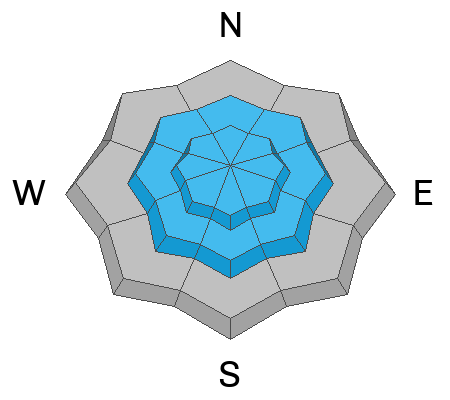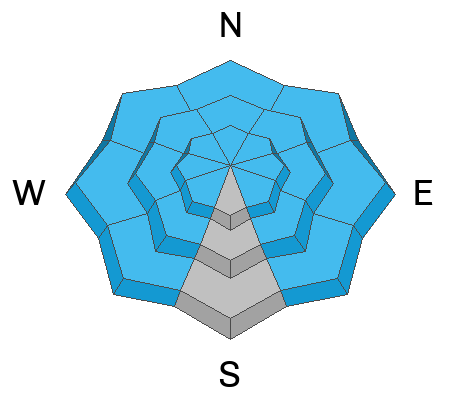New UAC Product! Sign up
HERE for forecast region-specific
text message alerts. You will receive messages about changing avalanche conditions, watches, and warnings.
Skies are partly cloudy.
Winds are generally light from the north-northwest, blowing 10-15mph with gusts to 25. Along the highest elevations overnight, the winds averaged 25-30mph with gusts to 45, but they've lost a bit of steam in the last couple hours. Mountain temperatures are in the single digits to mid-teens.
Snow report: the Provo mountains picked up 5-12" (0.62"SWE) of new snow with the most reported at Sundance resort.
For today, we'll have partly cloudy skies, light winds from the northwest, and temps in the single digits. Increasing clouds tonight.
For tomorrow and through the end of time, I'll only remind you, Be careful what you wish for. We have a very active weather pattern on deck with a series of storms starting tomorrow afternoon. Temperatures warm to the upper teens to low 20s tomorrow as the westerly winds (from the west) amp up and become strong Tuesday afternoon. Light snowfall should begin midday. By the end of the weekend, we'll be measuring the snowfall in terms of feet, not inches.
We only heard that a snowcat triggered a shallow soft slab on a steep shady aspect below 8000'. I believe this to be more of an anomaly and yet there is very weak snow leftover from December's drought just waiting for enough snow and/or wind to be active. Guide and educator Erik Fullmer spotted some natural loose dry sluffs in the new snow high in the UFO Bowls near Aspen Grove.







